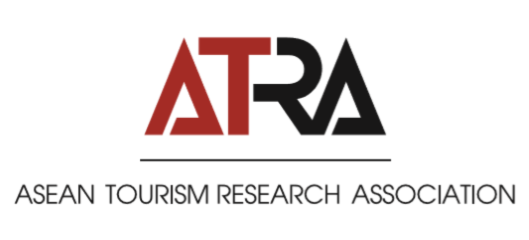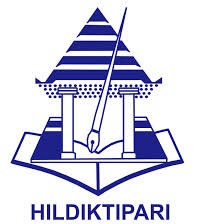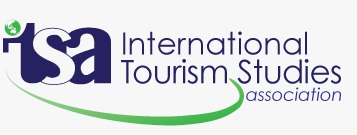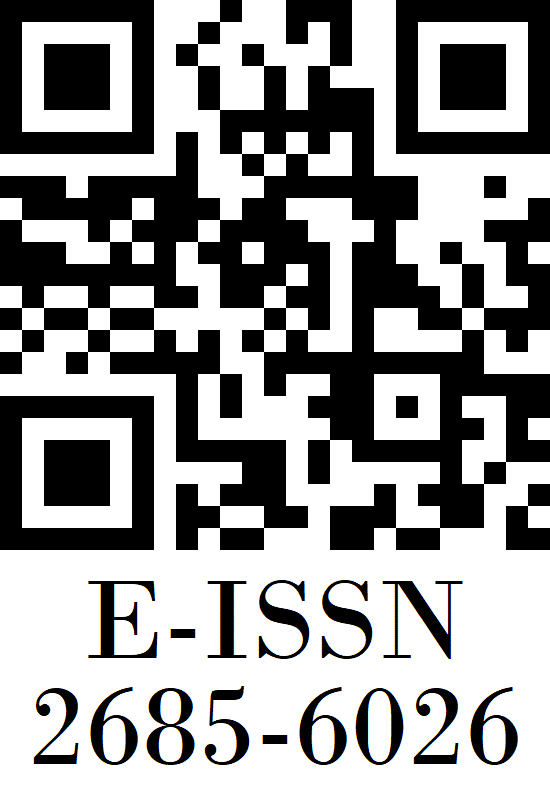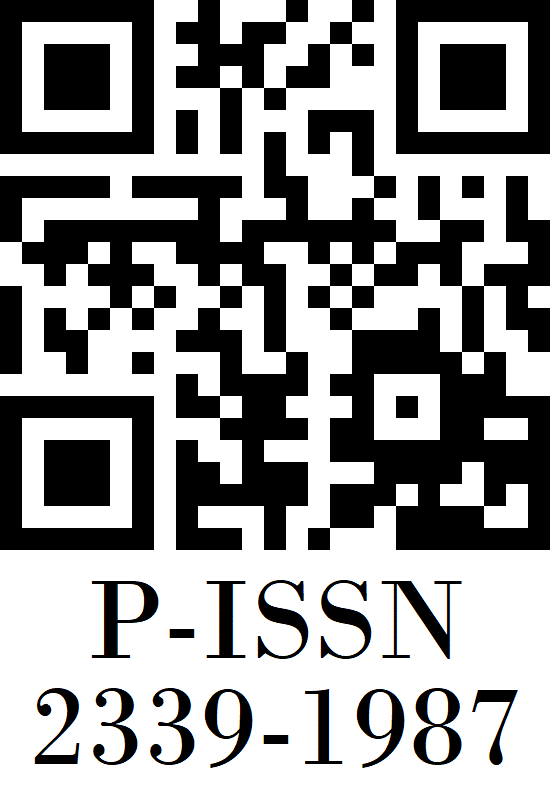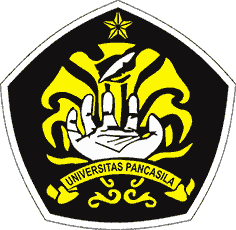INDEX OF FEASIBILITY LEVEL OF NATURAL TOURISM ATTRACTIONS OF THE RAINBOW FOREST, MOUNTAIN CUPU PURWAKARTA
Abstract views: 150 | pdf downloads: 246
Abstract
Purwakarta has 62 tourist destinations in 2023, one of the interesting places to visit is Pelangi Forest, Mount Cupu, Purwakarta. This destination has been established since 2017 on an area of 5 (five) hectares and is still being developed. It is called Pelangi Forest which means Rainbow Forest because it has a unique theme, decorating the forest with lots of colorful ornaments like a Pelangi. However, the level of tourist visits is still very low, it is known that there were only 2,582 tourists per year in 2020. This research aims to analyze the extent of the natural tourism potential of Pelangi Forest. The method used is quantitative descriptive, where data collection is carried out through distributing questionnaires to 30 tourists. The collected data was then analyzed using the Analysis of Operation Area-Natural Tourism Objects and Attractions (Analisis Daerah Operasi Objek dan Daya Tarik Wisata Alam (ADO-ODTWA)) criteria assessment by the Directorate General of PHKA by providing an assessment of each specified indicator. The results obtained were that the Pelangi Forest was suitable for development as a natural tourism objects and attractions (70.70%>66.67%). It is hoped that this research can become a reference and alternative strategy for managing the Pelangi Forest in developing its tourist attraction to be more optimal so that it can increase the number of tourists in the future, as well as being a source of information for other parties who need it through published journals.
References
Alvianna, S., Patalo, R. G., Hidayatullah, S., & Rachmawati, I. K. (2020). Pengaruh Attraction, Accessibillity, Amenity, Ancillary Terhadap Kepuasan Generasi Millenial Berkunjung ke Tempat Wisata. Jurnal Kepariwisataan: Destinasi, Hospitalitas Dan Perjalanan, 4(1), 53–59.
Ardiansyah, I., & Iskandar, H. (2022). Analisis Potensi Ekowisata Di Taman Wisata Alam Gunung Pancar Dengan Menggunakan Metode Analisis Ado – Odtwa. Jurnal Inovasi Penelitian, 2(8), 2621–2630. https://stp-mataram.e-journal.id/JIP/article/view/1137
Badan Pusat Statistik Provinsi Jawa barat. (2021). Jumlah Kunjungan Wisatawan Ke Objek Wisata (Vol. 148, pp. 148–162). https://jabar.bps.go.id/indicator/16/220/1/jumlah-kunjungan-wisatawan-ke-objek-wisata.html Access Time: September 18, 2021, 8:10 am
Barus, S. I. P., Patana, P., & Afifuddin, Y. (2013). Analisis potensi obyek wisata dan kesiapan masyarakat dalam pengembangan desa wisata berbasis masyarakat di Kawasan Danau Linting Kabupaten Deli Serdang. Peronema Forestry Science Journal, 2(2), 143–151.
BPS, R. I. (2023). Statistik Objek Daya Tarik Wisata 2021. BPS. https://www.bps.go.id/publication/2023/05/18/f1511face611270ed812cd2d/statistik-objek-daya-tarik-wisata-2021.html
Cooper, C., Fletcher, J., Fyall, A., Gilbert, D., & Wanhill, S. (2000). Tourism: Principles and Practice. Group Limited.
DirJen PHKA. (2003). Pedoman Analisis Daerah Operasi Obyek Daya Tarik Wisata Alam (ADO-ODTWA).
Fandeli, C. (1995). Dasar-dasar manajemen kepariwisataan alam (pertama). Liberty.
Farida, F., & Lestari, E. (2023). Pengaruh Motivasi terhadap Keputusan Berkunjung Ke Kota Tua Jakarta. Jurnal Pendidikan Tambusai, 7(2), 13430–13439.
Juddi, M. F. (2019). KOMUNIKASI BUDAYA DAN DOKUMENTASI KONTEMPORER. UNPAD Press, Bandung.
Kotler, P., & Armstrong, G. (2015). Principles of Marketing (Limited). Pearson Education.
Permenparekraf. (2020). Peraturan Menteri Pariwisata Dan Ekonomi Kreatif/ Kepala Badan Pariwisata Dan Ekonomi Kreatif Republik Indonesia Nomor 12 Tahun 2020 Tentang Rencana Strategis Kementerian Pariwisata Dan Ekonomi Kreatif/ Badan Pariwisata Dan Ekonomi Kreatif Tahun 2020-2024. 1–125. www.jdih.kemenparekraf.go.id
Pitana, I. G., & Diarta, I. K. S. (2009). PENGANTAR ILMU PARIWISATA (Cet. 1). Andi.
Rudiyanto, R., & Hutagalung, S. (2022). Analisis Potensi Wisata Alam Dengan Ado-Odtwa Studi Kasus: Desa Kempo. Jurnal Kepariwisataan, 21(2), 130–143. https://doi.org/10.52352/jpar.v21i2.821
Sarim, & Wiyana, T. (2017). Pengaruh Fasilitas Wisatawan Terhadap Motivasi Kunjungan Wisatawan (Studi Kasus Kunjungan Wisatawan Kota Solo). Jurnal Hospitality Dan Pariwisata, Vol.3(2), 294–374. http://journal.ubm.ac.id/
Satato, Y. R., Yuliamir, H., & Rahayu, E. (2019). Potensi Wisata Kampung Pelangi Sebagai Daya Tarik Wisata. Jurnal Ilmiah Ekonomi Dan Bisnis, 12(1), 63–70.
Scott, N., Baggio, R., & Cooper, C. (2008). Network Analysis and Tourism: From Theory to Practice. In Network Analysis and Tourism: From Theory to Practice (Issue May). https://doi.org/10.3727/108354209789705057
Spilane, J. P., & Callahan, K. A. (2000). mplementing state standards for science education: What district policy makers make of the Hoopla. Journal of Research in Science Teaching, 37(5), 401-425 (25). https://doi.org/https://doi.org/10.1002/(SICI)1098-2736(200005)37:5<401::AID-TEA2>3.0.CO;2-D
Sugiyono. (2012). Metode Penelitian Kuantitatif Kualitatif dan R&D. Alfabeta.
Susanti, A. D., & Mandaka, M. (2019). Evaluation on Sumber Seneng Natural Park, Rembang As Tourism Object Using Ado-Odtwa Analysis. Modul, 19(1), 25. https://doi.org/10.14710/mdl.19.1.2019.25-32
Susianto, B., Johannes, J., & Yacob, S. (2022). Pengaruh Daya Tarik Wisata dan Amenitas Terhadap Keputusan Berkunjung Wisatawan pada Desa Wisata Kabupaten Kerinci. Jurnal Ilmu Manajemen Terapan, 3(6), 592–605. https://www.dinastirev.org/JIMT/article/view/1094%0Ahttps://www.dinastirev.org/JIMT/article/download/1094/658
Trisnisa, M. J., Yuniarti, E., & Mulki, G. Z. (2020). ANALISIS KELAYAKAN POTENSI OBJEK DAYA TARIK WISATA ALAM (ODTWA) DANAU HO’CE DI DESA KUALA DUA KECAMATAN SUNGAI RAYA KABUPATEN KUBURAYA. JeLAST : Jurnal Teknik Kelautan , PWK , Sipil, Dan Tambang, 7(3), 1–10. https://doi.org/http://dx.doi.org/10.26418/jelast.v7i3.44492
Undang-Undang RI No.10 Tahun 2009 tentang Kepariwisataan, (2009).
Vivekanandya, S. A. (2019). Pariwisata Dan Perdagangan Internasional: Sebuah Perluasan Model Gravitasi (Studi Kasus: Indonesia). Jurnal Ilmiah Mahasiswa Universitas Brawijaya, 7(2). https://jimfeb.ub.ac.id/index.php/jimfeb/article/view/6001/5286
Wardana, D., Zainal, Z., & Ginting, A. H. (2020). Strategi Pemerintah Dalam Pengembangan Objek Wisata Alam Teluk Jering Kabupaten Kampar. Jurnal Ilmiah Wahana Bhakti Praja, 10(1), 211–219. https://doi.org/10.33701/jiwbp.v10i1.874
Yoeti, O. A. (2002). Perencanaan strategis pemasaran daerah tujuan wisata. Pradnya Paramita.
Yoeti, O. A. (2006). Tours and Travel Management. PT Pradnya Paramita.
Yuniarti, E., Soekmadi, R., Arifin, H. S., & Noorachmat, B. P. (2018). Analisis Potensi Ekowisata Heart of Borneo Di Taman Nasional Betung Kerihun Dan Danau Sentarum Kabupaten Kapuas Hulu. Jurnal Pengelolaan Sumberdaya Alam Dan Lingkungan (Journal of Natural Resources and Environmental Management), 8(1), 44–54. https://doi.org/10.29244/jpsl.8.1.44-54




